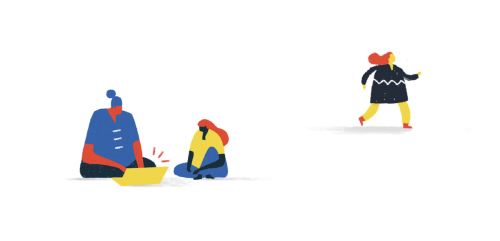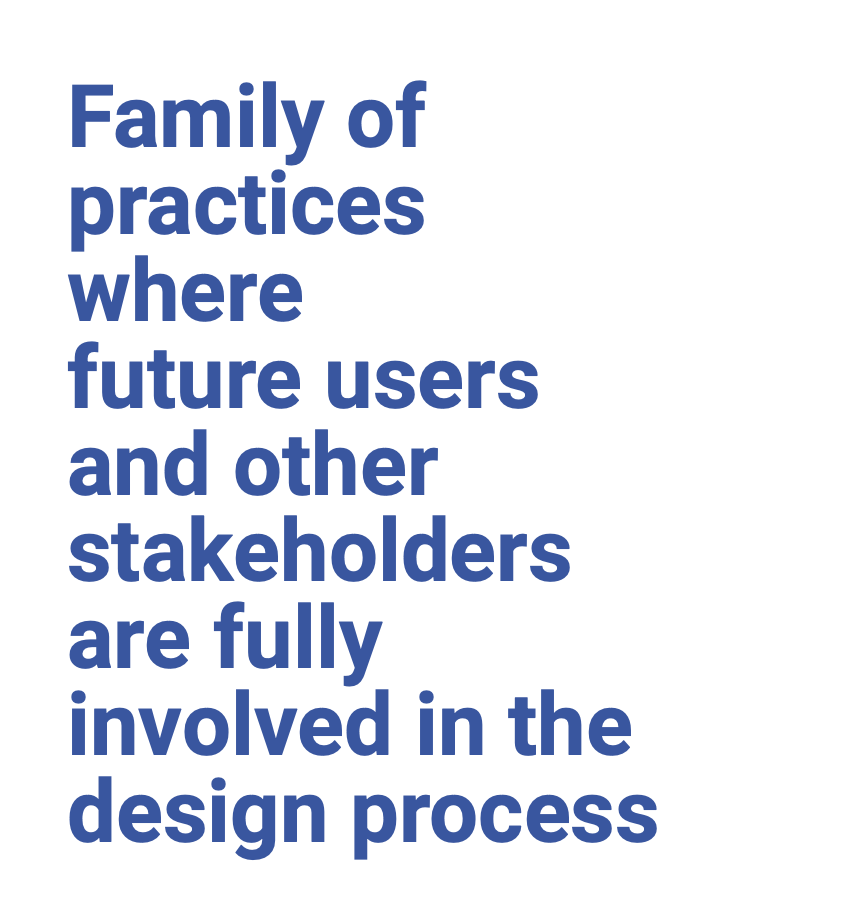
Children affected by displacement
Children affected by displacement refers both to displaced children and children of host communities who are also (albeit differently) affected by displacement. While categorising children and other residents as either displaced/refugees or hosts is sometimes necessary in this handbook, in practice the authors advocate for working with all potential users of built interventions. Their diversity is based on many dimensions, of which displacement is only one.
At times, the terms ‘displaced’ and ‘hosts’ are used to distinguish between those who were forced to move and other residents. However, the authors consider all residents of certain areas as directly or indirectly affected by displacement. We work to engage a diversity of people, to encourage social cohesion and acknowledge that different individuals may have different rights that can affect how they benefit from built interventions. The implications of these distinctions cannot be assumed through externally defined categories. They should be considered alongside other dimensions which affect the diversity of children, for example, gender, age, class, experience of violence, and others.This handbook adopts the Convention on the Rights of the Child ( article 1) definition, that a child is any person under the age of 18. However, children are a very diverse group and their experiences of displacement can also be very different. In the introduction, some of the dimensions of diversity in children were introduced. These dimensions intersect to produce unique experiences, and thus practitioners need to devise participatory design processes that take this into account. This handbook does not explain how to work with all such dimensions. It rather focuses on giving an overview of the potential of the entire process of co-design of built interventions. It does, however, provide links to high-quality resources that contain detailed guidelines for working with different age groups, genders, abilities, etc.
Age requires particular focus, as multiple radical transformations take place in a person’s first 18 years. Biological and non-biological needs, sense of self, aspirations, and modes of expression all vary widely from adolescents and teenagers to younger children, for example. Classifications, social meaning and what is allowed at certain ages depend on many other intersecting contextual factors such as culture, gender, class, etc. The language of age classifications is often connected to specific educational and cultural systems (e.g. baby, toddler, preschool, grade-schooler, teen). Moreover, labels like adolescent or youth may also include those older than 18 (e.g. UN statistical definitions of ‘adolescent’ includes those aged 10–19, ‘youth’ includes 15–24-year-olds).
This means that, while this handbook and linked resources indicate an appropriate age for some of the tools presented, the involvement of local educators and caregivers is fundamental for planning activities involving children. Therefore, while some age classifications for children are more widely accepted, in this handbook we prefer not to adopt any one specifically, and instead highlight the importance of age in interventions with children.
Finally, girls deserve particular attention because, in many marginalised urban contexts, females’ access to public space is further limited by social norms, the perception or reality of safety concerns, and other factors. Later, we explain the specific complexities facing adolescent girls. A strong gender lens is fundamental when planning co-designed built interventions and can improve the wellbeing of both girls and boys.
Co-design and Participatory Design
This handbook acknowledges the different origins of the terms Participatory Design (PD) and Co-design; as well as the academic debates that often view participatory design as involving a deeper and higher form of participation than co-design. Here, we use these terms interchangeably. In this handbook, Participatory Design and Co-design refer to a family of practices where future users and other stakeholders are fully involved in the design process.

A useful working definition is provided by Simonsen and Robertson (2013, p. 2): “a process of investigating, understanding, reflecting upon, establishing, developing, and supporting mutual learning between multiple participants in collective ‘reflection-in-action’. The participants typically undertake the two principal roles of users and designers where the designers strive to learn the realities of the users’ situation while the users strive to articulate their desired aims and learn appropriate technological means to obtain them.” Co-design can be understood and implemented as a tool to build local human capacity. It contributes to the sustainability of the end product, as this will not be dependent on external inputs once the participatory process has been successfully completed. The level of participation depends on the characteristics of the project. It could be a community-led design involving minimal external input, with the community self-managing each phase; or it could involve more structured participation within a project that has a preestablished scope and a deeper reliance on external professionals.
In this handbook, ‘Design’ refers to the entire process of creating a built intervention, starting with an idea and ending with the built intervention. This includes the implementation of a built intervention, as design choices can also be made during construction. This understanding differs from other approaches that limit design to the drawing of an intervention. We illustrate the different steps involved within this broader understanding of the design process.
Co-designed built interventions
This handbook uses the term intervention rather than ‘project’, as the latter is considered too narrow and formal in this context. Intervention also refers to less structured or longer term co-design processes that are not necessarily formulated as projects.
Built interventions are referred to because the main focus is on spatial interventions with a built component, even if this may be small. Examples include child-friendly spaces, schools, playgrounds, and other urban public space interventions to make cities more child-friendly. However, many components of this handbook may also inform interventions without a built aspect.
A key assumption underpinning this text is that children should be able to play everywhere. The handbook argues for the importance of having cities where children feel safe and welcomed. It asserts that even small interventions can help change attitudes and develop stakeholders’ awareness of the importance of cities becoming more child friendly. Sometimes, interventions involve existing spaces to make them work better for children, and can be as simple as removing obstacles to play.
Beyond the site of the intervention, it is important to think about the paths children take to move between places. Are these safe for both girls and boys? Do they promote autonomy (e.g. can children safely walk to school)?



